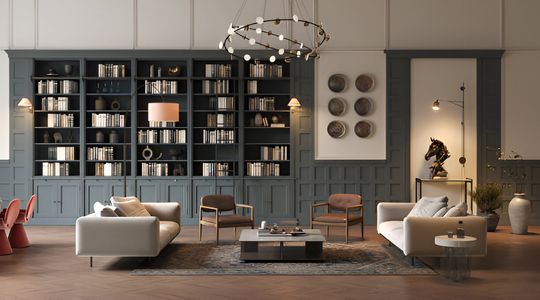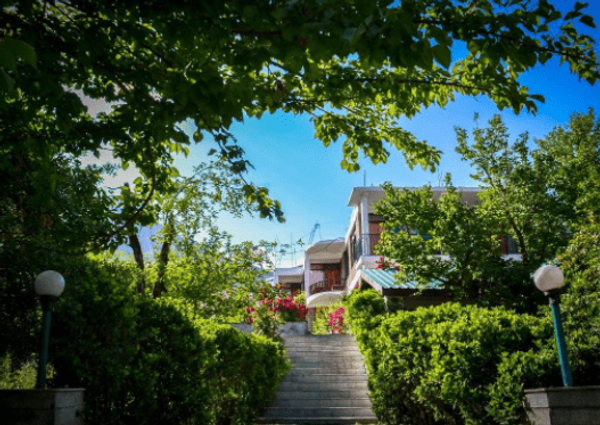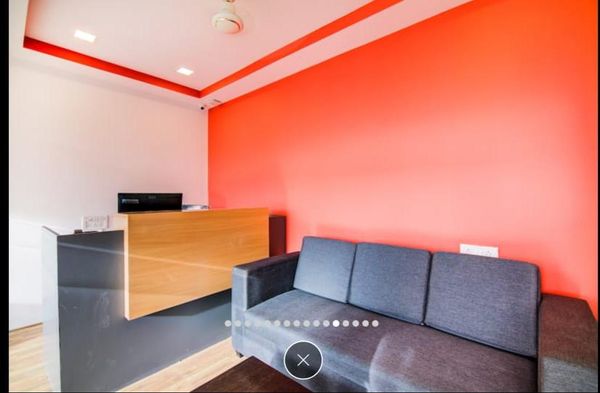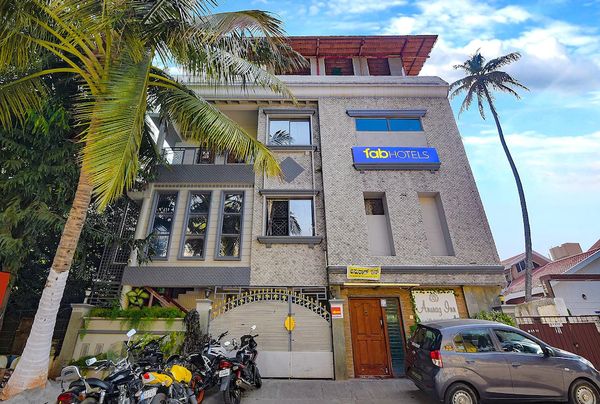Vertical Integration: The New Trend in Boutique Architecture & Design
 Owais Jani
26 Jan, 2025
11 mins read
85
Owais Jani
26 Jan, 2025
11 mins read
85

Vertical Integration: The New Trend in Boutique Architecture & Design
In the ever-evolving landscape of architecture and interior design, smaller boutique firms are embracing a transformative strategy: vertical integration. Traditionally the domain of large firms, vertical integration involves expanding services to cover various stages of the construction process. At Centerline Design & Build in Maine, we are at the forefront of this movement, combining intensive design expertise with the practical experience of lifelong builders. This integrated approach not only enhances control and efficiency but also revolutionizes the client experience, offering a seamless "one-stop shop" from dream to reality.
Understanding Vertical Integration in Architecture and Design
What is Vertical Integration?
Vertical integration in architecture and design refers to the consolidation of multiple stages of the project lifecycle under a single firm’s umbrella. This means that a boutique firm like Centerline Design & Build manages everything from the initial design concept through to construction and final furnishing. Unlike traditional models where design and construction are handled by separate entities, vertical integration ensures a cohesive and unified approach to every project.
Traditional vs. Integrated Models
In traditional project delivery methods, architects and designers collaborate with separate construction firms. This often leads to fragmented communication, potential delays, and inconsistencies in quality. In contrast, an integrated design-build model streamlines these processes by having all services managed in-house. This not only ensures that the original design vision is maintained but also enhances coordination and efficiency throughout the project.
The Shift Towards Vertical Integration Among Boutique Firms
Industry Growth and Market Projections
The architecture, engineering, and construction (AEC) industry is experiencing significant growth. In 2023, the global architectural services market was valued at $376.08 billion and is projected to grow at a compound annual growth rate (CAGR) of 4.9% from 2024 to 2030. In the U.S., the market is expected to expand at a CAGR of 4.2% during the same period. This growth is driving firms to pursue both vertical and horizontal integration to enhance their supply chains, consolidate market presence, and diversify offerings.
Role of Technology in Enabling Integration
Technological advancements are pivotal in making vertical integration accessible to smaller firms. Innovations such as digital twin technology, artificial intelligence (AI), modular and prefabricated construction, and robotics are transforming the AEC sector. These technologies optimize designs, improve efficiency, and reduce costs, making it easier for boutique firms to manage multiple aspects of a project internally. At Centerline Design & Build, we leverage these technologies to enhance our integrated services, ensuring high-quality outcomes for our clients.
Benefits of Vertical Integration for Boutique Firms
Enhanced Control Over Project Outcomes
One of the primary advantages of vertical integration is the enhanced control it provides over project outcomes. By overseeing both design and construction, Centerline Design & Build ensures that the original design integrity is maintained throughout the construction process. This seamless oversight allows us to uphold high-quality standards and swiftly address any challenges that arise, ensuring that the final product aligns perfectly with the client’s vision.
Improved Efficiency and Streamlined Processes
Integrating design and construction services significantly improves efficiency. With all teams working under one roof, communication and coordination are streamlined, reducing the likelihood of delays and errors associated with handing off projects between separate entities. This unified approach not only accelerates project timelines but also enhances the overall quality of work, providing a more efficient and satisfying experience for our clients.
Cost Savings and Increased Profitability
Vertical integration offers substantial cost savings by allowing for better budget management and resource allocation. Direct control over construction processes enables Centerline Design & Build to manage costs more effectively, potentially reducing expenses on materials and labor. Additionally, eliminating intermediary costs enhances profitability, allowing us to offer competitive pricing without compromising on quality.
Challenges of Vertical Integration for Smaller Firms
Resource Intensiveness
Expanding services to include both design and construction requires significant investment in infrastructure, technology, and talent. For smaller firms, this can strain resources and necessitate careful financial planning. At Centerline Design & Build, we have strategically invested in state-of-the-art technologies and skilled professionals to support our integrated model, ensuring that we can deliver exceptional results without overextending our resources.
Risk Management
Assuming responsibility for additional project phases introduces new risks, such as construction liabilities and market fluctuations. Effective risk management strategies are essential to navigate these challenges. Our team at Centerline Design & Build employs comprehensive risk assessment and mitigation plans to safeguard our projects and maintain stability in a dynamic market.
Staying Competitive
As more boutique firms adopt vertical integration, maintaining a competitive edge requires continuous innovation and adaptation. Staying ahead of industry trends and evolving client needs is crucial. Centerline Design & Build remains committed to innovation, regularly updating our practices and embracing new technologies to ensure we deliver cutting-edge solutions to our clients.
Real-World Examples of Vertical Integration Success
The Bradley Projects
Based in Nashville, The Bradley Projects has successfully integrated architecture and construction services, allowing for the efficient development of mixed-use spaces. This approach streamlined processes and expedited project timelines, demonstrating the tangible benefits of vertical integration in a real-world setting.
Roers Companies
Roers Companies, though not a boutique firm, exemplifies the advantages of vertical integration. In a project in Rosemount, Minnesota, the firm saved approximately $1.2 million in construction costs by integrating development and construction services. This strategic move enabled significant cost reductions and value enhancements, showcasing the potential financial benefits of an integrated approach.
How Centerline Design & Build Embraces Vertical Integration
Our Integrated Approach
At Centerline Design & Build, we pride ourselves on offering a one-stop shop experience. From the initial consultation to the final furnishing, our team manages every aspect of the project. This end-to-end project management ensures that our clients experience a seamless transition from design to construction, with every detail meticulously handled.
Client Success Stories
Residential Renovation
One of our recent projects involved a comprehensive residential renovation where we managed both the design and construction phases. The client was thrilled with the cohesive execution and the seamless integration of new design elements with existing structures, resulting in a beautifully transformed home.
Home Addition
In another project, we successfully added a new wing to a client's home, managing the entire process from conceptual design to final construction. The integrated approach allowed us to deliver the project on time and within budget, exceeding the client's expectations.
Our Approach to Integrated Design and Build
Collaboration is at the heart of our integrated model. Our design and construction teams work closely from the outset, ensuring that every aspect of the project is aligned with the client’s vision. Additionally, we utilize advanced technologies to enhance efficiency and quality, enabling us to deliver exceptional results consistently.
The Future of Vertical Integration in Interior Design & Construction
Industry Predictions
The trend of vertical integration among boutique firms is set to continue growing. As technological advancements further streamline integrated services, more firms are likely to adopt this model to enhance their competitiveness and meet evolving client demands. The future of design-build services promises even greater efficiency, quality, and client satisfaction.
How Centerline Plans to Stay Ahead
At Centerline Design & Build, we are committed to continuous improvement and innovation. By staying abreast of the latest industry trends and expanding our services, we aim to maintain our leadership in vertical integration. Our focus on integrating cutting-edge technologies and enhancing our service offerings ensures that we remain a top choice for clients seeking comprehensive interior design and construction solutions.
Conclusion
Vertical integration represents a strategic shift for boutique architecture and design firms, offering enhanced control, improved efficiency, and significant cost savings. While this approach presents challenges, such as resource intensiveness and increased risk, the benefits far outweigh the drawbacks for firms like Centerline Design & Build. By embracing vertical integration, we provide our clients with a seamless, high-quality experience from start to finish, positioning ourselves as leaders in the competitive Maine interior design and construction market.
Ready to transform your home with an integrated design-build approach? Contact Centerline Design & Build today to discover how our comprehensive services can bring your vision to life.
Written By:
Owais Jani



Hotels at your convenience
Now choose your stay according to your preference. From finding a place for your dream destination or a mere weekend getaway to business accommodations or brief stay, we have got you covered. Explore hotels as per your mood.


